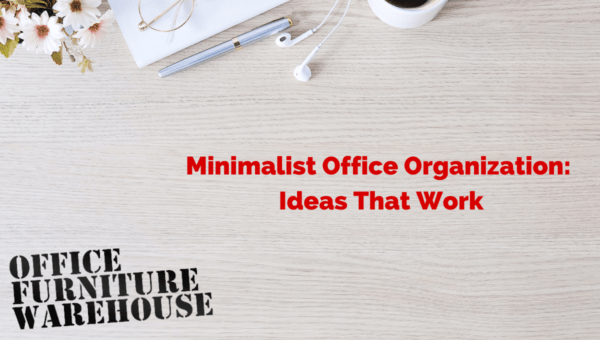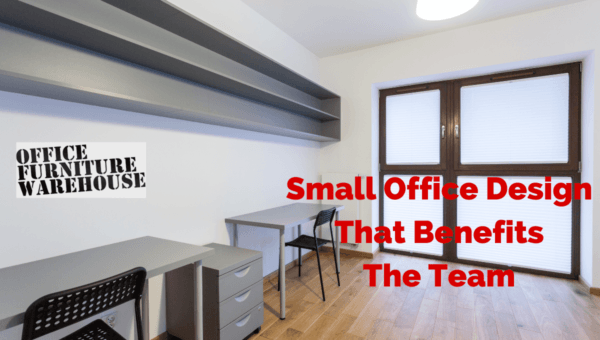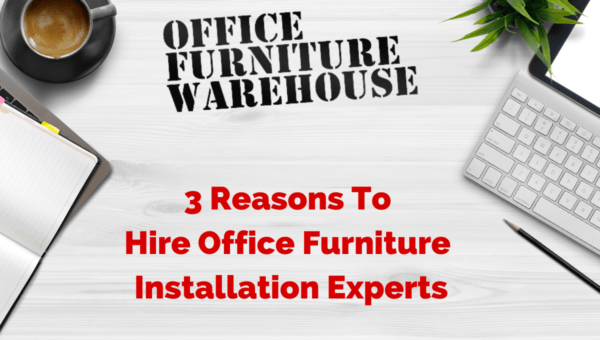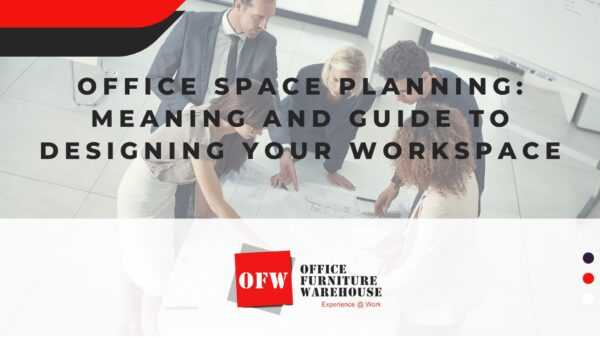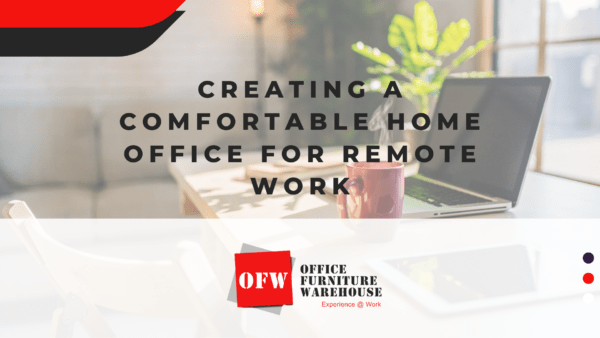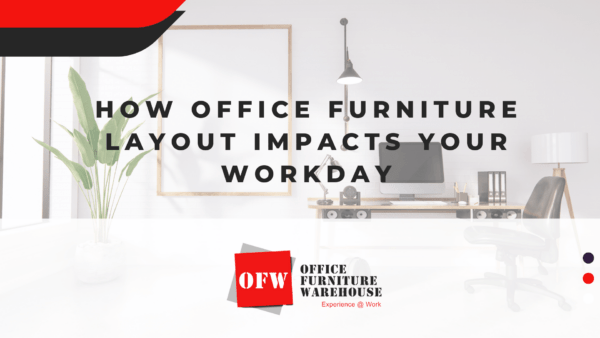Re-Opening The Office? This Checklist Can Help
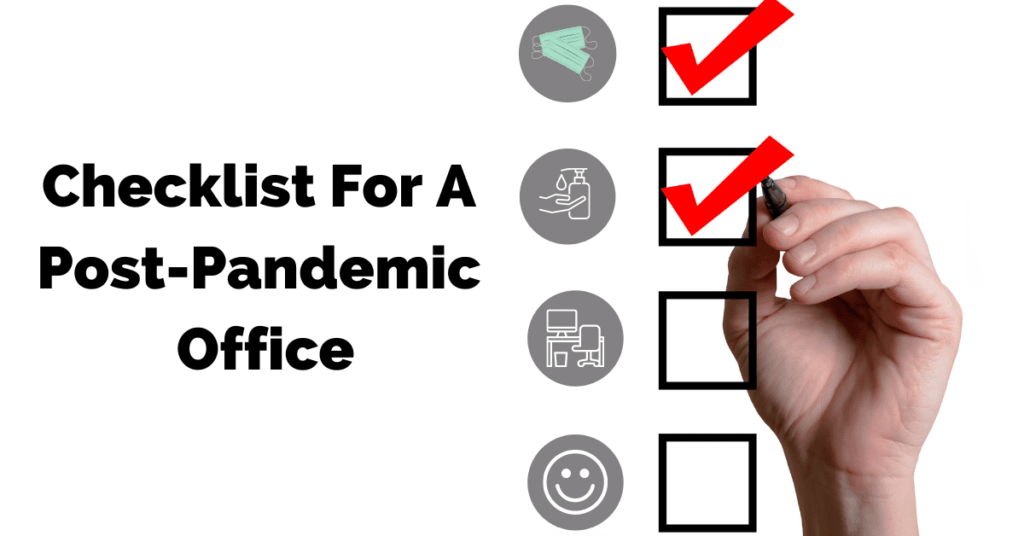
All across the country, offices are reopening or considering reopening. However, with the rise and fall of COVID-19 cases, there are many concerns about workplace safety. No one wants to spread a virus or catch it, so where do you start? We have created this checklist, “Opening Office After Pandemic,” to help you navigate these special concerns.
Workplace Safety Matters
The safety of all your employees is the top priority. When possible, utilize remote work as much as possible. We know this is not always feasible, so use your best judgment on what is necessary for an office and what is not.
The first thing to check is the ventilation systems and air conditioning units of the building. Some office buildings have not been used in a year and can have issues that need to be addressed. Once you know that everything is in working order, you can move on to reviewing your office space.
Be Mindful Of Office Furniture, Common Areas, And Break Rooms
When you start to really think about making your office safe, many areas need to be considered. The office furniture may need to be rearranged to create more space to create social distancing while working. Cubicles that are close together are not recommended, rather set them up far apart so that people can have their own space without coming in close contact with other employees. Meetings should not commence inside any cubicles; only the person working in that space should be allowed.
Common areas will need additional cleaning, and reconsider if they should be utilized. Waiting rooms should remain empty as much as possible. Make sure any visitors coming for a meeting arrive at the appropriate time and space all meetings out so that there is never more than one person in that area.
Break rooms should be sanitized often if they are used at all. The less use the break room has, the better it would be for the employees. Also, encourage short breaks to be taken outside for fresh air whenever possible.
Conference rooms can have panels of plexiglass installed at the large meeting tables to create social distancing. They also allow everyone to see each other physically.
Before opening, have maintenance staff come in and help with the rearrangement of the office space and install hand sanitizer stations. Hand sanitizer should be in every room and at every entrance/exit.
Stop allowing for shared equipment as much as possible. Avoid printing as much as possible to avoid physical contact. If you must use equipment that is shared, have sanitizing wipes handy. Each employee should wipe it down before and after use.
Personal Protective Equipment Is Your Friend
Employers and employees alike struggle with the use of personal protective equipment (PPE). Requiring the staff to wear face masks is a must to keep everyone healthy. Another PPE to offer is:
- face shields
- disposable face masks
- gloves
- bottles of hand sanitizer
Companies must encourage social distancing, self-isolation if at high risk, working remotely, and anything else that keeps employees safe. As of now, it’s best to avoid any business travel. Don’t forget the power of opening windows and allowing fresh air in. A healthy workplace does wonders for morale and hope for a post-pandemic world.
Create Physical Barriers At Entrances
When it comes to visitors, monitoring who is coming and going from the office is another important area of concern. Staggered shifts allow fewer people in the office and avoid a cluster of people arriving at the same time. Allow for entrance through one door and exit at a different door. Hand sanitizer dispensers at all entrances and exits are a must-have to keep everyone safe.
Have A Plan For Sick Employees
The pandemic has taught us quite a lot about virus transmission and implementing unusual protocols to continue business and keep employees healthy.
Have a plan for symptoms of any illness, not solely covid-19! Each entrance should have a health station set up. This will be an area for taking temperatures (with a no-contact forehead thermometer), offering disposable face coverings, and hand sanitizer stations.
Remind all customers and employees to wear a mask and wash hands with soap and water as much as possible. The health and safety of everyone is a communal responsibility.
If someone is sick, encourage employees to stay home. Workers can opt to do complete tasks remotely if they feel up to it. Encourage testing for any illness and calling a doctor immediately. If your employee lives in an area where there are many cases of COVID-19, be mindful that they may not be able to access a doctor within three days. This should be done for any cough, touch of fever, or body aches that a person feels. There should automatically be a two-week isolation period after they begin to feel better. It is better to be safe than sorry, and your healthy employees will appreciate avoiding any illness.
The Cleaning Checklist You Didn’t Know You Needed
Before opening, it is good to hire someone to do a complete cleaning of the building and offices. Then perform a walk-through to determine what needs to be cleaned often. High touch surfaces are the most vulnerable, and those include:
- light switches
- elevator buttons
- door handles
- windows
- desk
- office chairs
- cubicles
- communal equipment (printers, telephones, fax machines, etc.)
It may be wise to have employees get a Google phone number that connects to their cell phone. They can use their personal device rather than share telephones and protect one another.
Because different materials are involved, the right cleaning tools will vary a little. Resin and laminate desktops are hardy materials that can take multiple cleanings in a day. They can be wiped down with gentle soap and water to remove dirt. The disinfectant should be an EPA-approved disinfectant that kills coronavirus and other pathogens.
Plastic or metal, like on an office chair, is also hardy and non-porous. Anything can be used but avoid bleach or chlorine solutions on plastic.
Wood is more delicate than the above and requires more attention. If you can move all solid wood furniture into a designated area so that it is not used, that would be best. Why? Because most EPA-approved disinfectants for coronavirus will damage the desk. If you must use wood furniture, talk to a manufacturer about getting a finish that prevents microbes and some viruses from making a home there.
Be Flexible -This Is New Territory
While this is not the first pandemic the world has seen, its impact is different for the era. Therefore, it is always advised to get legal advice regarding mask mandates and company policies. The last thing you want is to violate employees’ rights. However, do ensure that social distancing measures are taken seriously and only change them when necessary.
Most importantly, be flexible. All worksites can turn into remote work easily. Schedule changes take time to implement and tweak to make it fit for a healthy return to work. Don’t be afraid to allow employees to create work hours that work best for their situations.
If you need help finding new or used furniture that is easy to care for, give our experts a call for the office. We will do everything we can to help businesses fulfill their needs for a healthy workplace.

